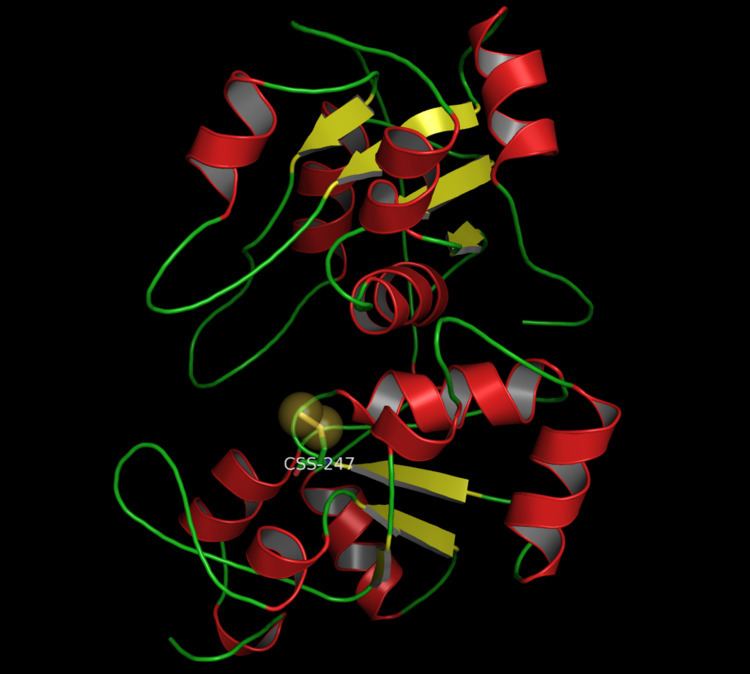Symbol Rhodanese InterPro IPR001763 SCOP 2ora | Pfam PF00581 PROSITE PDOC00322 SUPERFAMILY 2ora | |
 | ||
Rhodanese, also known as rhodanase, thiosulfate sulfurtransferase, thiosulfate cyanide transsulfurase, and thiosulfate thiotransferase, is a mitochondrial enzyme that detoxifies cyanide (CN−) by converting it to thiocyanate (SCN−).
Contents
This reaction takes place in two steps. The diagram on the right shows the crystallographically-determined structure of rhodanese. In the first step, thiosulfate is reduced by the thiol group on cysteine-247 1, to form a persulfide and a sulfite 2. In the second step, the persulfide reacts with cyanide to produce thiocyanate, re-generating the cysteine thiol 1.
This reaction is important for the treatment of exposure to cyanide, since the thiocyanate formed is less toxic. The use of thiosulfate solution as an antidote for cyanide poisoning is based on the activation of this enzymatic cycle.
Rhodanese shares evolutionary relationship with a large family of proteins, including
Rhodanese has an internal duplication. This domain is found as a single copy in other proteins, including phosphatases and ubiquitin C-terminal hydrolases.
Human proteins containing this domain
CDC25A; CDC25B; CDC25C; DUSP; DUSP1; DUSP10; DUSP16; DUSP2; DUSP4; DUSP5; DUSP6; DUSP7; KAT; MKP7; MOCS3; MPST; TBCK; TSGA14; TST; USP8;
Nomenclature
Although the standard nomenclature rules for enzymes indicate that their names are to end with the letters "-ase", rhodanese was first described in 1933, prior to the 1955 establishment of the Enzyme Commission; as such, the older name had already attained widespread usage.
